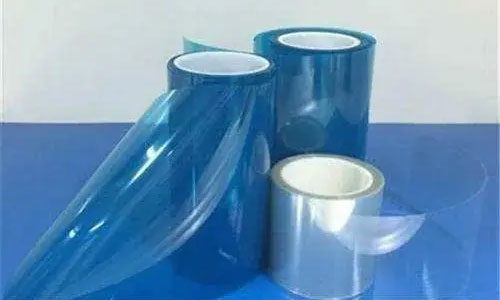Die cutting waste is generally divided into automatic waste removal and manual waste removal. The advantage of automatic waste removal is its fast speed and high efficiency. For multi-knife processes, the advantage of automatic waste removal is particularly evident. It removes waste while die cutting, reducing the difficulty of waste removal caused by re-adhesion. Some highly adhesive adhesives still need manual waste removal using rotary blades. The advantage of manual waste removal is its flexibility, allowing for the handling of complex and difficult-to-remove waste products, although it is slower in efficiency.
Common hot melt adhesives, such as window sealants, have various folding shapes, and some areas have very small adhesive areas, making automatic waste removal difficult and requiring manual removal. Additionally, adhesives without substrates are prone to defects when replacing release paper. If the release paper cannot be replaced, it means that automatic waste removal cannot be used in many situations and manual waste removal is necessary.
In traditional die cutting waste selection, release film, release paper, or protection film are commonly used.
Common die cutting waste materials:
The commonly used release film or release paper has a release force of 0-2 grams, 1-3 grams, 3-5 grams, with thicknesses of 25/35/50/75μm. The colors are transparent, red, and blue (primarily used for marking during die cutting). They are suitable for single-sided adhesive/protective film and FPC carrier film.

For single-sided adhesive waste, release paper/release film with low release force is generally used; for double-sided adhesive waste, 80g Glazin release paper, 25-30μm transparent, matte, PE/release film PP film is commonly used.
For double-sided adhesive die cutting, overflow of adhesive frequently occurs. In most cases, the die and mold will compress the double-sided adhesive, causing adhesive residue after die cutting, resulting in adhesive overflow during waste removal, especially for smaller edge areas.
When cutting protective film, efficient base material is usually used for continuous operation to improve production efficiency. Many die cutting manufacturers are not familiar with specific base materials for waste removal.
Common base materials for waste removal include PE protective film, OPP protective film, or PET protective film. PE protective film has low cost and flexibility, and is generally used for die cutting harder materials. PET protective film has higher cost and hardness, and has a wider range of applications, suitable for waste removal of both hard and soft materials.
Impact of Material Performance on Waste Removal
There are many factors that affect waste removal, mainly including material performance, product shape and structure, product layout, and process composition. Below are some common waste removal problems:
1. Adding some anti-adhesive agents during die cutting can prevent film sticking and product re-adhesion.
2. For products like camera foam, the surrounding waste on the die-cutting tool pad should be removed to prevent adhesive bonding between the pad and waste, which can hinder waste removal.
3. The appropriate release force of the base film affects waste removal and customer usage. If previous methods fail, you can use PET or other harder materials to create a fixture that helps press down the product during waste removal.
4. If the base film breaks during waste removal, you should consider whether the base film is too thin. If the problem persists even after using a thicker film, it may be due to the die cutting depth being too deep. Be cautious when choosing easily breakable base films. Generally, small-sized waste cannot be removed together with machine-assisted waste removal.
Contact: Pamela
Phone: +86 189 6365 3253
E-mail: info@industryprocess.com
Whatsapp:+86 189 6365 3253
Add: Yajing Industrial Park, No. 59 Shuangjing Street, Weiting Town, Suzhou Industrial Park
We chat
